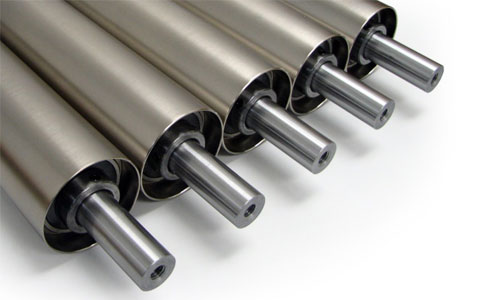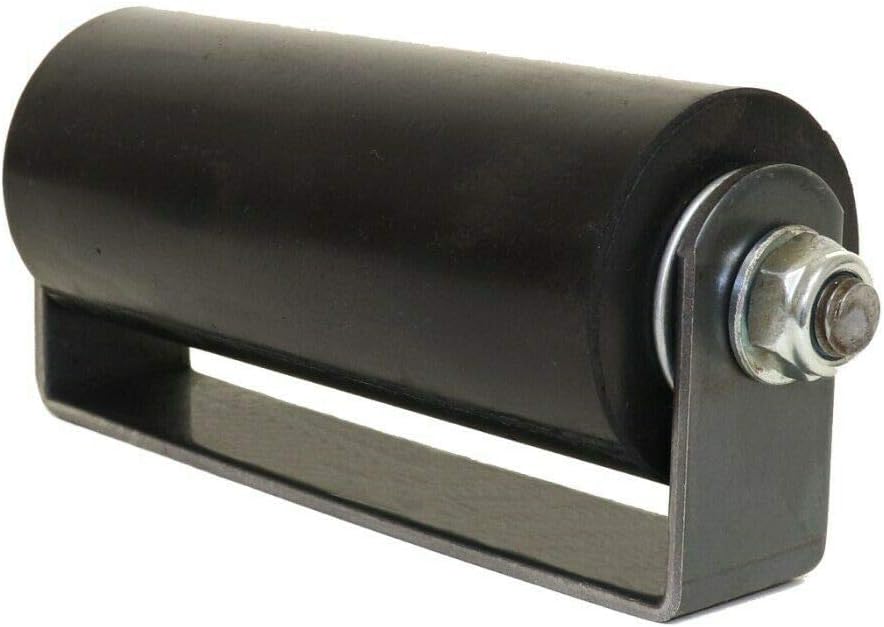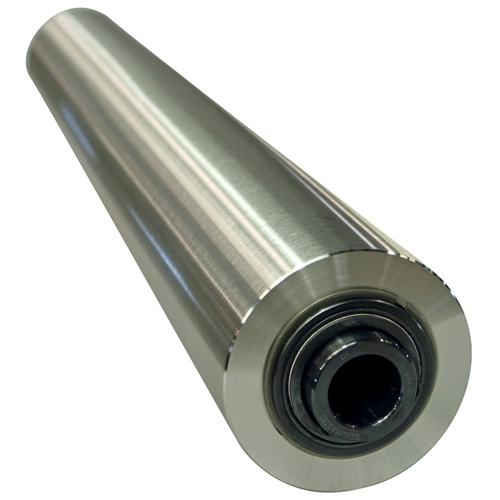Product Description
Product Description
heavy duty belt conveyor carrying idler mining belt conveyor roller
steel rollers for conveyor belt steel roller idler
Product Application
definition
The tapered roller is divided into a conical upper aligning roller and a conical lower aligning roller set. The tapered roller has wear resistance and long service life. Light weight and low inertia. The structure is reasonable and the sealing is reliable. Excellent anti-corrosion performance.
Characteristics
The tapered roller has wear resistance, very low friction coefficient, and is not easy to wear the belt;
Superior self-lubricating, no oiling, difficult to use under harsh conditions;
Corrosion resistant to antistatic, anti-combustion, aging, acid, alkali and organic solvents;
Can withstand repeated shocks and vibrations; ambient temperature range: -40 ° C -90 ° C;
Excellent mechanical properties, light weight, easy installation, no maintenance;
Smooth operation and long life.
Application range
Conical rollers are widely used in steel, power plants, docks, coal mines and other transportation industries. They are wear-resistant, impact-resistant, noise-free, anti-static, self-lubricating and tear-free conveyor belts, reducing drag for long distances. Delivery reduces energy consumption.
Our products are widely used in thermal power generation, harbours, cement plants, metallurgy and as well as the light duty conveying devices for industries.
RKM-NS Model addes a sealed cover in its design. The distance between the sealed cover and bearing provides the bearing with a dust proof to ensure a longer working lift. This design is suitable for a normal working environment.
| SPECIFICATIONS | |||
| Diameter | φ89, φ102, φ108, φ114, φ127, φ133, φ139, φ152, φ159, φ165, φ194 | ||
| Length | 145mm-2800mm | ||
| Tube | Q235(GB), Q345(GB), welded with DIN2394 standed | ||
| Shaft |
A3 and 45# steel(GB) | ||
| Bearing | Single & Double Row Deep Groove Ball Bearing 2RS&ZZ with C3 clearance | ||
| Bearing Housing/Seat | Cold press working fit ISO M7 accuracy Deep Press steel with raw material fit DIN 1623-1624 standard |
||
| Lubricating Oil | Grade 2 or 3 long-lasting lithium greasae | ||
| Welding | Mixed gas shielded arc welding end | ||
| Painting | Ordinary painting, hot galvanized painting, electric static spraying painting, baked painting | ||
|
GLOBAL CONVEYOR SUPPLIES COMPANY LIMITED |
|||
|
Production Name |
Belt conveyor roller |
||
|
Belt Width |
mm |
||
|
Materials |
Q235 carbon steel, stainless steel,rubber,nylon, UHMWPE |
||
|
Type |
DTII, TD75, aligning |
||
|
Degree |
Customized, like 45 10±5 20±5 |
||
|
Welding |
Automatic welding |
||
|
Surface |
Electrostatic spray painting, galvanized |
||
About roller,we can make gravity conveyor roller,steel conveyor roller,driving roller,light middle duty conveyor roller,o-belt tapered sleeve roller,gravity tapered roller,polymer sprocket roller and so on.More details,please contact us.
Main Features
1) CHINAMFG design, suitable for heavy lifting.
2) The bearing housing and steel tube are assembled and welded with a concentric automatic.
3) Cutting of the steel tube and bearing is performed with the use of a digital auto device/machine/equipment..
4) The bearing end is constructed to ensure that the roller shaft and bearing can be firmly connected.
5) Fabrication of the roller is effected by an auto device and 100% tested for its concentricity.
6) Roller and supporting components/materials are manufactured to DIN/ AFNOR/ FEM/ ASTM/ CEMA standard.
7) The casing is manufactured with highly composite, anti corrosive alloy.
8) The roller is lubricated and free from maintenance.
9) Woring life expectancy is up to 30,000 hours or more, depending on usage.
10)Vacuum sealed which has withstood anti water, salt, snuff, sandstone and dust proof experiments
Related Products
Testing Machines
Certifications
Our Service
Our Company
Global Conveyor Supplies Co., Ltd.
Established in 1995; Land area = 20,000 m2; Staff= 120 persons.
Located in HangZhou, ZheJiang Province, next to HangZhou city.
GCS, RKM is a registered trademark in China.
GCS enjoys a renowned reputation and our products are marketed globally in South-East Asia, Middle East, Africa, Australia, Europe, Hong Kong and many other countries.
/* January 22, 2571 19:08:37 */!function(){function s(e,r){var a,o={};try{e&&e.split(“,”).forEach(function(e,t){e&&(a=e.match(/(.*?):(.*)$/))&&1
| Material: | Steel |
|---|---|
| Application: | Chemical Industry, Grain Transportation, Mining Transport, Power Plant |
| Structure: | Ordinary Roller |
| Bearing Type: | Double Sealed Bearing |
| Type: | Grooved Conveyor Idler |
| Bearing: | 6204/6205/6305/6307 |
| Samples: |
US$ 50/Piece
1 Piece(Min.Order) | |
|---|
| Customization: |
Available
|
|
|---|

Can guide rollers be customized for specific industries or conveyor configurations?
Yes, guide rollers can be customized to meet the specific requirements of different industries or conveyor configurations. Here’s a detailed explanation of how guide rollers can be customized:
- Material Selection:
The choice of materials for guide rollers can be customized based on the industry or application requirements. Different industries may have specific material requirements due to factors such as environmental conditions, load capacity, or chemical resistance. Guide rollers can be manufactured using various materials, including metals like stainless steel or aluminum, as well as different types of polymers such as polyurethane or nylon. Customizing the material selection ensures that the guide rollers are suitable for the industry’s unique needs and can withstand the demands of the conveyor system.
- Dimensions and Sizes:
Guide rollers can be customized in terms of their dimensions and sizes to accommodate specific conveyor configurations. The outer diameter, length, and shaft dimensions of the guide rollers can be adjusted to fit the available space or specific mounting requirements. Customizing the dimensions and sizes ensures proper integration of the guide rollers into the conveyor system and allows for seamless operation without any constraints or interference.
- Flanges and Grooves:
The configuration of flanges and grooves on guide rollers can be customized to provide enhanced guidance and control. Depending on the application, different industries may require specific flange or groove designs to prevent material deviation, improve lateral stability, or facilitate tracking along curved or inclined conveyor sections. Customizing the flange and groove configurations ensures that the guide rollers meet the precise guidance and alignment needs of the conveyor system in a particular industry.
- Specialized Coatings or Finishes:
Guide rollers can be customized with specialized coatings or finishes to enhance their performance and durability. Industries with unique requirements, such as food processing, pharmaceuticals, or electronics, may require guide rollers with specific coatings to ensure hygiene, reduce friction, or prevent static buildup. Customized coatings or finishes can be applied to guide rollers to meet the industry’s specific needs and comply with regulatory standards.
- Mounting Configurations:
The mounting configurations of guide rollers can be customized to align with different conveyor systems. Industries may have varied conveyor designs, such as overhead conveyors, floor-mounted conveyors, or inclined conveyors. Customizing the mounting configurations of guide rollers ensures proper installation and integration with the specific conveyor configuration, allowing for efficient material handling and smooth operation.
- Specialized Features:
Guide rollers can be customized with specialized features to cater to unique industry requirements. For example, industries that handle delicate or fragile materials may require guide rollers with cushioning or shock-absorbing properties to minimize impact. Customized features like bearings, seals, or lubrication systems can also be incorporated into guide rollers based on specific industry needs. These specialized features enhance the performance, reliability, and longevity of guide rollers in demanding industrial applications.
By offering customization options such as material selection, dimensions and sizes, flanges and grooves, specialized coatings or finishes, mounting configurations, and specialized features, guide rollers can be tailored to meet the specific requirements of different industries or conveyor configurations. Customized guide rollers ensure optimal performance, compatibility, and efficiency in material handling applications.

Are there innovations or advancements in guide roller technology that have emerged recently?
Yes, there have been several recent innovations and advancements in guide roller technology. Here are some notable developments:
- High-Performance Materials:
Recent advancements in materials science have led to the development of high-performance materials for guide rollers. These materials offer improved strength, durability, and wear resistance, allowing guide rollers to withstand heavy loads and harsh operating conditions. For example, composite materials combining polymers and fibers offer excellent mechanical properties while being lightweight. Additionally, advancements in surface coatings, such as ceramic or diamond-like carbon (DLC) coatings, provide enhanced friction reduction, corrosion resistance, and longevity.
- Precision Design and Manufacturing:
Guide rollers are now being designed and manufactured with a greater emphasis on precision. Advanced manufacturing techniques, such as computer numerical control (CNC) machining and 3D printing, enable the production of guide rollers with complex geometries, tight tolerances, and optimized performance characteristics. This precision design and manufacturing result in guide rollers that offer improved alignment, reduced vibration, and enhanced overall performance.
- Integrated Sensors and Monitoring:
Advancements in sensor technology have made it possible to integrate sensors directly into guide rollers. These sensors can monitor various parameters such as temperature, vibration, or load, providing real-time feedback on the condition and performance of the guide rollers. This data can be used for predictive maintenance, allowing for proactive identification of potential issues and timely intervention to prevent failures or downtime. Integrated sensors and monitoring systems contribute to improved reliability, efficiency, and maintenance practices in material handling systems.
- Smart Guide Rollers:
Smart guide rollers leverage emerging technologies, such as Internet of Things (IoT) and artificial intelligence (AI), to enhance their functionality and performance. These guide rollers can communicate with other components or systems within the material handling setup, enabling real-time optimization, automation, and control. For example, smart guide rollers can adjust their position or speed dynamically based on the specific material being handled or the desired process parameters. This adaptability and intelligence lead to improved efficiency, flexibility, and responsiveness in material handling operations.
- Energy Efficiency:
In response to the growing emphasis on sustainability and energy conservation, guide roller technology has seen advancements aimed at improving energy efficiency. This includes the development of low-friction materials, optimized roller designs, and innovative bearing systems that minimize power consumption and reduce frictional losses. By reducing energy requirements, these advancements contribute to lower operational costs and a reduced environmental footprint.
In summary, recent innovations and advancements in guide roller technology encompass high-performance materials, precision design and manufacturing, integrated sensors and monitoring, smart capabilities, and energy efficiency. These advancements enhance the durability, performance, reliability, and sustainability of guide rollers, making them more effective and versatile in a wide range of material handling applications.

Can you explain the primary functions and role of a guide roller in machinery?
A guide roller plays crucial functions and holds a significant role in machinery. Here’s a detailed explanation of the primary functions and role of a guide roller:
- Guidance and Alignment:
One of the primary functions of a guide roller is to provide guidance and alignment for moving components within machinery. It ensures that objects or materials follow a predetermined path or track, preventing them from deviating or straying off course. The guide roller’s smooth or grooved surface, along with its rotational movement, helps maintain proper alignment and prevents misalignment or unwanted movements. By guiding the motion of objects, the guide roller ensures accurate positioning and efficient operation of the machinery.
- Support and Load Distribution:
A guide roller serves as a support mechanism, carrying the weight of objects or loads within the machinery. It helps distribute the load evenly, preventing excessive stress or strain on specific components. By providing support and load distribution, the guide roller enhances the stability and overall performance of the machinery. It reduces the risk of component failures, improves operational efficiency, and extends the lifespan of the machinery.
- Friction Reduction:
Guide rollers also play a role in reducing friction within machinery. As objects move along the guide roller’s surface, the roller’s design minimizes contact friction between the object and the machinery’s components. This friction reduction helps to conserve energy and prevent excessive wear and tear on both the objects being transported and the machinery itself. By reducing friction, guide rollers contribute to smoother operation, lower maintenance requirements, and improved overall efficiency.
- Prevention of Damage and Misalignment:
The presence of guide rollers helps prevent damage and misalignment of objects or materials within machinery. By providing a designated path or track, guide rollers ensure that moving components stay in the intended position and avoid colliding with other parts of the machinery. This prevents potential damage to the objects being transported and the machinery itself. Additionally, guide rollers help prevent misalignment, which could lead to operational issues, decreased performance, and increased risk of accidents or mechanical failures.
- Noise and Vibration Reduction:
Guide rollers contribute to noise reduction and vibration damping within machinery. The rotational movement of the guide roller absorbs and dissipates vibrations generated during operation, minimizing the transmission of vibrations to other parts of the machinery. This reduction in vibration helps to maintain a quieter working environment, reduces the risk of noise-related health issues for operators, and improves overall user comfort.
In summary, the primary functions and role of a guide roller in machinery include providing guidance and alignment for moving components, offering support and load distribution, reducing friction, preventing damage and misalignment, and contributing to noise and vibration reduction. By fulfilling these functions, guide rollers enhance the overall performance, reliability, and longevity of machinery in various industrial applications.


editor by Dream 2024-04-23